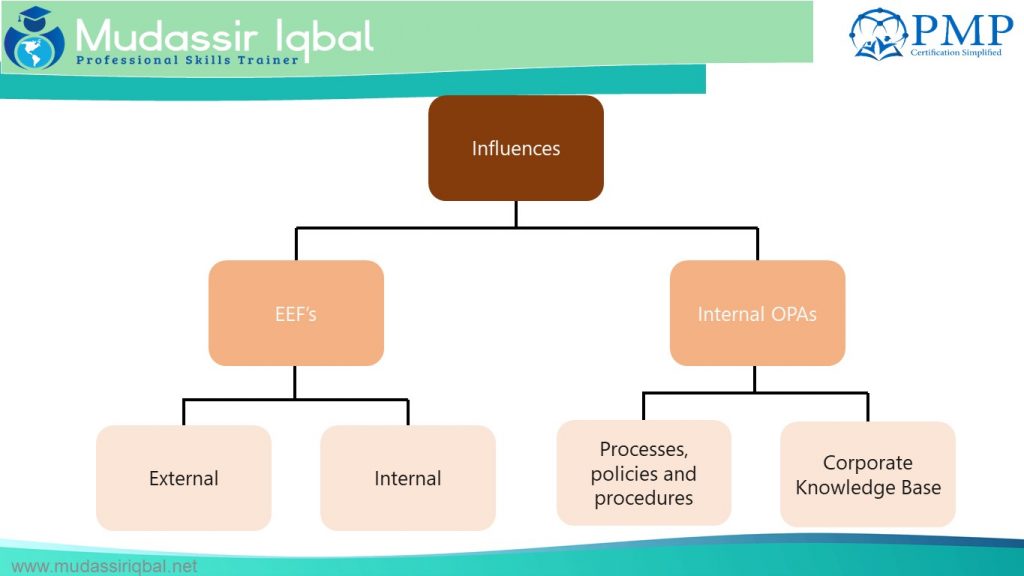‘Enterprise Environment Factors’ and ‘Organisational Process Assets’: EEF vs OPA
You, your team and your project are not in space, they are surrounded by the environment. EEF and OPA’s make this environment for you. They do not compete with each other as EEF vs OPA, but they help the project manager to understand the project environment and make appropriate decisions. They are to support and in some cases, constraints, the performing organisation and the wider community to assist project teams in managing and delivering their projects.
Environment
Environment is everything that is around us. Living things live in their environment. They constantly interact with it and adapt themselves to conditions in their environment. (Wikipedia). For instance, we must wear woollen clothes in cold weather to keep ourselves warm. The cold weather is the “environment” that forces us to cover ourselves with woollen clothes.
This is the impact of a cold environment on us.
Enterprise Environmental Factors (EEF) and Organization Process Assets (OPA) are fundamental inputs to project management processes. However many people find it challenging to differentiate between them. The knowledge of these key components will help many candidates to better understand the practice of project management.

Enterprise Environmental Factors (EEF):
Enterprise environmental factors (EEFs) refer to conditions, not under the control of the project team, that influence, constrain, or direct the project.
Enterprise Environmental Factors refer to certain conditions that might influence or help the project which is not under the control of the project team. It’s important for the project team to understand and work with EEF to progressively carry out the project. The project management team has little or no influence on the Enterprise’s Environmental Factors and therefore it is often seen as obstacles or opportunity. These include various factors such as the current internal and external infrastructure, networks and software, and computer systems. These dynamics are both inside and outside the organization that influence the way you manage the project. The cultural, political, economic and legal environments the project is operating within are considered as EEF
We have two types of Enterprise Environmental Factors

- Internal or Organizational Environment
- Organizational culture
- Type of organizational structure
- Internal political conditions
- Available resources
- Power Structure
- External i.e Beyond Organization
- Government regulation
- Market conditions
- Infrastructure
- External political conditions
Organization Process Assets (OPA):
Organizational process assets (OPAs) are the plans, processes, policies, procedures, and knowledge bases specific to and used by the performing organization.
Organization Process Assets comprise plans, processes, guidelines, and knowledge formulated by the organization which is used in the management of the project. Many businesses develop a wide range of templates, procedures, plans, registers, and evaluation tools to help in the management of the project. According to PMI, Organization Process Assets typically lie in two categories. One is documentation which includes both present documents and historic records while the other is knowledge repositories that combine and organize the information and make it handy. These sources of information help project managers in achieving their ultimate project objectives.
As depicted in the diagram, OPA are divided into two sets.

- Processes and procedures
- HR and other General Policies
- Procurement Procedures
- The standard template for Project Charter, MOM, Approvals
- General guidelines
- Corporate knowledge
- Risk register
- Lessons learned
- Stakeholder register
- Past project files
- Historical information
- Project Report
- Project Files

The Differences: EEF vs OPA
Even though EEF and OPA look similar in purpose, in reality, they are not. Organization Process Assets help businesses to consistently improve their processes, assist the project management team in gaining information, and share best practices using a combined knowledge-based approach. On the contrary, Enterprise Environmental Factors may or may not help the organization. These are the conditions in which the company is required to work, though it doesn’t fall under the control of the project management team. For instance, if government increase tax, it will negatively affect the profit of the business. On the other hand, if it decreases, it will benefit your business. The other major difference is Enterprise Environmental Factors are difficult to change and in any way you need to live with them. While Organization Process Assets are customized according to the requirement and help the team in efficiently handling the project.
Comparison
- EEF’s are to mandatory to follow, OPA’s are best practices and can be omitted if needed
- EEF’s will always influence the project, whereas as a process improvement exercise we may update OPA’s.
- EEF’s work as constraints and therefore limits the options for the project team, whereas being Assets, OPA’s is to facilitate the project.
- Changes in EEF’s are rather not possible whereas OPA’s can be made better for future use.
- PMIS and all other systems like Work Authorizations are part of EEF as Internal Influencer because your project has to use it as this is company policy and standard application to be used.
- EEF’s we can’t control them whereas OPA helps us to do things efficiently
- OPA’s are Assets and EEF’s are Factors, which can be in favour or against your project objectives
The Challenges
While reading the PMBOK 6, especially for EEFs and OPA’s we will find that many items which we in real life deal as one item, PMBOK divides them between OPA’s and EEFs
- Approved Suppliers are EEF but Contracts are OPA
- Ethics and code of conduct are listed as both internal and external EEFs (Pg 38 and 39).
- Management systems like Information Technology, Configuration management, Issues & Detect Management are part of Internal EEFs, whereas knowledge repositories created are OPAs.
- Commercial risk databases are EEFs, whereas organizational risk categories are OPAs.
- Work authorization systems are EEFs, whereas procedures for issuing work authorizations are OPAs.
- Human resources availability are EEFs, whereas human resource policy for hiring, reward recognition systems etc are OPAs.
- Environmental policies are OPAs.

